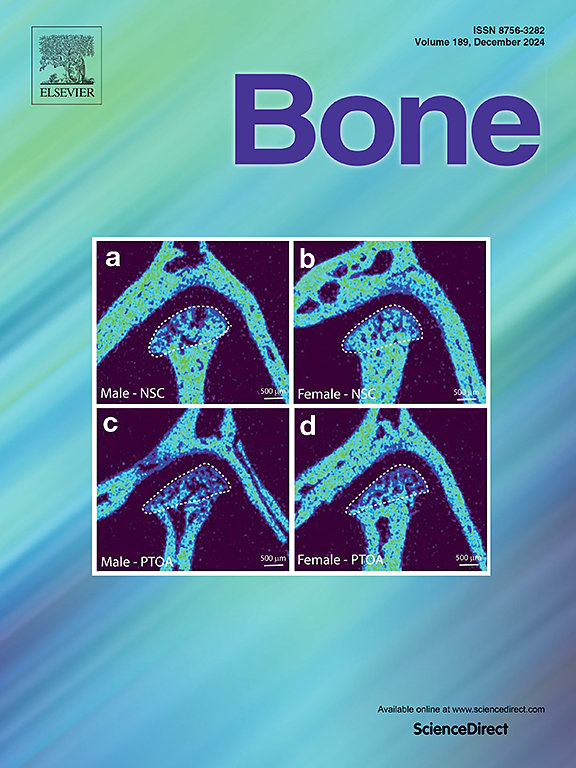Reference values for cross-linked C-telopeptide of type 1 collagen and pro-collagen type1 N-terminal propeptide in children and adolescents: Results from the Canadian Health Measures Survey
IF 3.6
2区 医学
Q2 ENDOCRINOLOGY & METABOLISM
引用次数: 0
Abstract
Introduction
Procollagen type 1 N-propeptide (P1NP) and carboxy-terminal telopeptide of type 1 collagen (CTX) are bone turnover markers for diagnosing and monitoring metabolic bone diseases and growth disorders. This study aimed to establish representative reference ranges for CTX and P1NP, as measured with an IDS-iSYS system, in Canadian children and adolescents.
Methods
Serum levels of CTX and P1NP were measured in participants of the Canadian Health Measures Survey, a nationally representative study. The LMSP method, using Box–Cox power exponential distribution to accommodate kurtosis in the distribution, was employed to estimate age- and sex-specific reference curves and parameters for Z-score calculation. In addition, non-parametric analysis was utilized to establish 95 % reference intervals for two-year age brackets. Reference curves were generated based on the cohort aged 6 to 27 years, and reference intervals were calculated based on the age range 6 to 20 years.
Results
The cohort included 1840 participants for CTX (51.6 % males) and 4069 for P1NP (50.5 % males). Reference ranges for age and sex showed the expected patterns with peaks at the age of puberty (earlier in females than males). As the aim of the study was to present representative reference data, results were provided based on the entire study population regardless of ethnicity and health status. Results obtained in the most common ethnicity (‘white’) and in the subgroup of ‘healthy white’ study participants were similar.
Conclusion
This study establishes age- and sex-specific reference values for serum concentrations of CTX and P1NP in Canadian individuals from 6 to 20 years of age. These results have the potential to enhance diagnostic accuracy and inform bone health clinical decision-making for this population.
儿童和青少年1型胶原和前胶原n端前肽交联c端肽的参考值:来自加拿大健康措施调查的结果
导言1型胶原蛋白的N-肽(P1NP)和1型胶原蛋白的羧基末端端肽(CTX)是诊断和监测代谢性骨病和生长障碍的骨转换标志物。本研究旨在通过 IDS-iSYS 系统测量加拿大儿童和青少年的 CTX 和 P1NP 水平,从而确定具有代表性的参考范围。采用 LMSP 方法,使用 Box-Cox 幂指数分布来适应分布中的峰度,从而估算出特定年龄和性别的参考曲线以及用于计算 Z 分数的参数。此外,还采用了非参数分析法来确定两年年龄段的 95 % 参考区间。参考曲线根据 6 至 27 岁的队列生成,参考区间根据 6 至 20 岁的年龄段计算。结果队列中有 1840 名 CTX 参与者(51.6% 为男性)和 4069 名 P1NP 参与者(50.5% 为男性)。年龄和性别的参考范围显示出预期的模式,在青春期达到峰值(女性早于男性)。由于该研究的目的是提供具有代表性的参考数据,因此其结果是根据整个研究人群(不分种族和健康状况)得出的。最常见种族("白种人")和 "健康白种人 "亚组研究参与者的结果相似。这些结果有望提高诊断的准确性,并为这一人群的骨健康临床决策提供参考。
本文章由计算机程序翻译,如有差异,请以英文原文为准。
求助全文
约1分钟内获得全文
求助全文
来源期刊

Bone
医学-内分泌学与代谢
CiteScore
8.90
自引率
4.90%
发文量
264
审稿时长
30 days
期刊介绍:
BONE is an interdisciplinary forum for the rapid publication of original articles and reviews on basic, translational, and clinical aspects of bone and mineral metabolism. The Journal also encourages submissions related to interactions of bone with other organ systems, including cartilage, endocrine, muscle, fat, neural, vascular, gastrointestinal, hematopoietic, and immune systems. Particular attention is placed on the application of experimental studies to clinical practice.
 求助内容:
求助内容: 应助结果提醒方式:
应助结果提醒方式:


